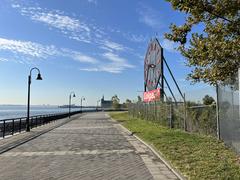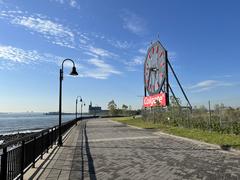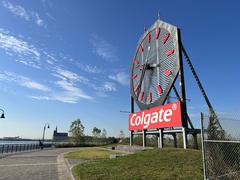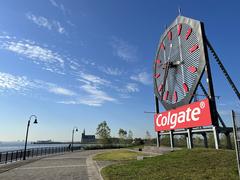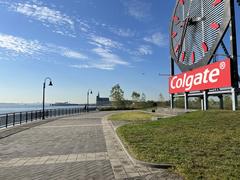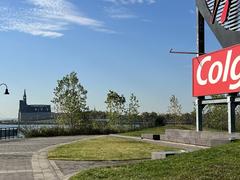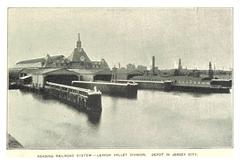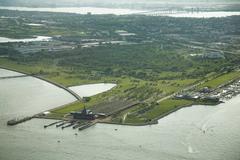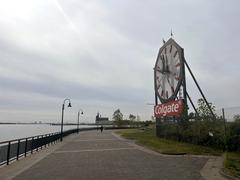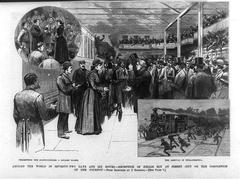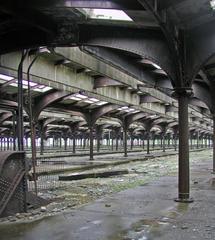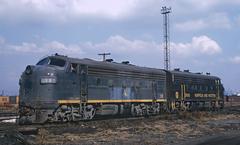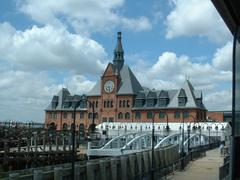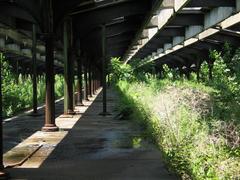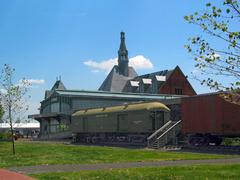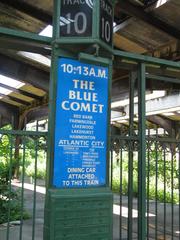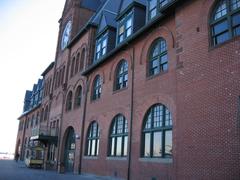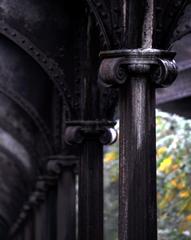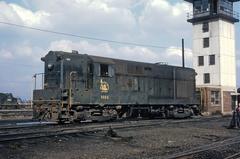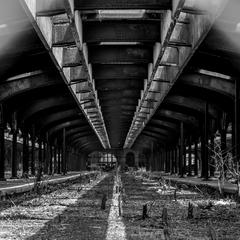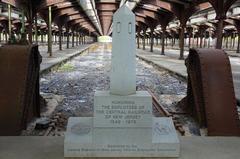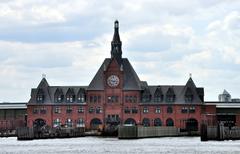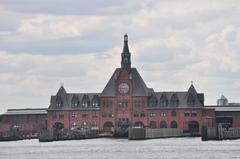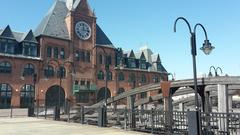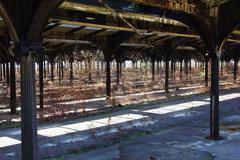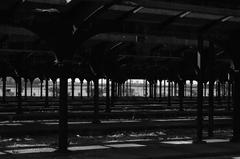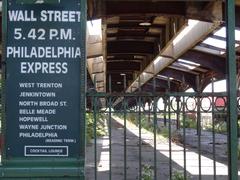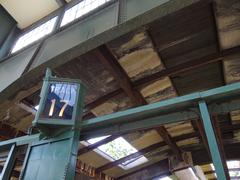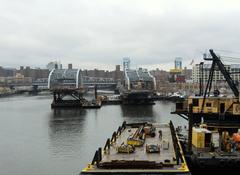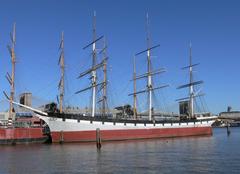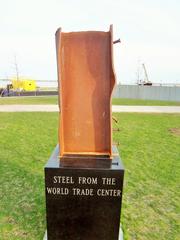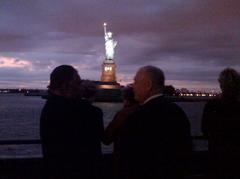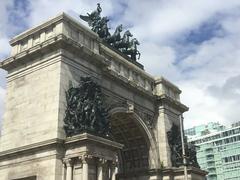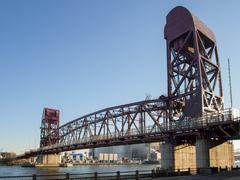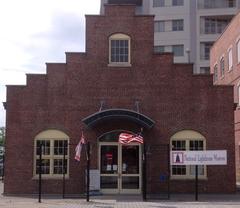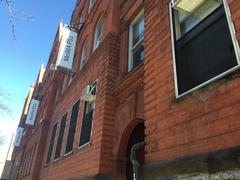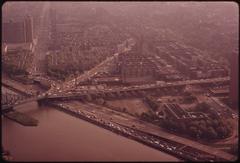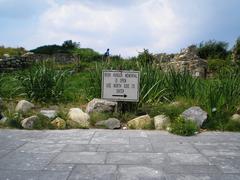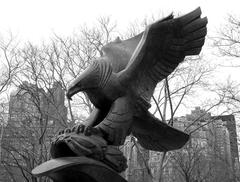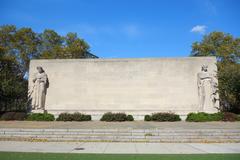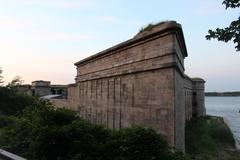
Visiting Central Railroad of New Jersey Terminal: Tickets, Hours, and History
Publication Date: 19/07/2024
Introduction to the Central Railroad of New Jersey Terminal
The Central Railroad of New Jersey Terminal, commonly known as the Communipaw Terminal, is an iconic historical site located in Liberty State Park, Jersey City, New Jersey. Constructed in 1889, this terminal has played a pivotal role in shaping the transportation and immigration narratives of the United States. Between 1892 and 1954, it served as a major departure point for millions of immigrants arriving at Ellis Island, marking the beginning of new lives across America (Liberty State Park).
Renowned for its Romanesque Revival architecture, the terminal stands as a testament to the architectural trends and transportation needs of the late 19th and early 20th centuries. Designed by the esteemed architectural firm Peabody & Stearns, its red brick facade, arched windows, and prominent clock tower are distinctive features that continue to captivate visitors (Liberty State Park). Today, the terminal is not only a symbol of historical significance but also a vibrant cultural and educational center, offering a range of exhibits, guided tours, and special events that celebrate its rich heritage. This guide provides comprehensive information on visiting the Central Railroad of New Jersey Terminal, including its history, ticket information, travel tips, and nearby attractions, ensuring an enriching experience for all visitors.
Table of Contents
- Introduction
- Visiting the Central Railroad of New Jersey Terminal - History, Tickets, and Tips
- Conclusion
- References and Sources
Visiting the Central Railroad of New Jersey Terminal - History, Tickets, and Tips
History of the Central Railroad of New Jersey Terminal
Early Beginnings and Construction
The Central Railroad of New Jersey Terminal, often referred to as the Communipaw Terminal, is a historic site located in Liberty State Park in Jersey City, New Jersey. The terminal was constructed in 1889 and served as a major transportation hub for immigrants arriving in the United States. Its construction was part of a broader effort to improve transportation infrastructure in the New York metropolitan area, facilitating the movement of people and goods.
Architectural Significance
The terminal was designed by the architectural firm Peabody & Stearns, known for their work on various significant buildings during the late 19th and early 20th centuries. The structure is an excellent example of Romanesque Revival architecture, characterized by its robust and grandiose design. The building features a large clock tower, which has become an iconic symbol of the terminal. The use of red brick and intricate detailing in the design reflects the architectural trends of the period.
Role in Immigration
One of the most significant aspects of the Central Railroad of New Jersey Terminal was its role in the immigration process. Between 1892 and 1954, the terminal served as a gateway for millions of immigrants arriving at Ellis Island. After being processed at Ellis Island, many immigrants would board trains at the terminal to travel to various destinations across the United States. This made the terminal a critical link in the chain of immigration, contributing to the cultural and demographic diversity of the nation.
Peak and Decline
The terminal reached its peak during the early 20th century, handling a vast number of passengers and freight. However, the rise of automobile travel and the decline of passenger rail services in the mid-20th century led to a decrease in the terminal’s usage. By the 1960s, the terminal had fallen into disrepair, and its services were significantly reduced. The last train departed from the terminal in April 1967, marking the end of an era.
Preservation and Restoration
Recognizing the historical significance of the terminal, efforts were made to preserve and restore the building. In 1976, the terminal was added to the National Register of Historic Places, ensuring its protection and recognition as a site of historical importance. Restoration efforts have focused on maintaining the architectural integrity of the building while making it accessible to the public. Today, the terminal serves as a museum and visitor center, offering insights into its rich history and the broader context of immigration and transportation in the United States.
Visiting Central Railroad of New Jersey Terminal - Tips and Accessibility
Accessibility
The terminal is accessible by public transportation, including the Hudson-Bergen Light Rail and various bus services. Parking is also available for those traveling by car.
Hours of Operation
The terminal is open to the public year-round, with varying hours depending on the season. It is advisable to check the official Liberty State Park website for the most up-to-date information on visiting hours and ticket prices.
Guided Tours
Guided tours are available and provide a comprehensive overview of the terminal’s history and significance. These tours are highly recommended for those interested in a deeper understanding of the site.
Exhibits and Displays
The terminal features various exhibits and displays that highlight its historical role and architectural features. Interactive exhibits provide an engaging experience for visitors of all ages.
Photography
The terminal and its surroundings offer numerous opportunities for photography, particularly the views of the Statue of Liberty and Ellis Island. Visitors are encouraged to bring cameras to capture the scenic beauty of the area.
Notable Events and Activities
Throughout the year, the terminal hosts various events and activities that celebrate its history and cultural significance. These events include historical reenactments, educational programs, and community gatherings. Visitors can participate in these events to gain a deeper appreciation of the terminal’s role in American history.
Educational Programs
The terminal offers a range of educational programs designed for students, educators, and history enthusiasts. These programs provide valuable insights into the history of immigration, transportation, and architecture. Schools and educational institutions can arrange field trips to the terminal, offering students a hands-on learning experience.
Future Prospects
Looking ahead, the Central Railroad of New Jersey Terminal continues to be a focal point for historical preservation and education. Ongoing efforts to maintain and enhance the site ensure that future generations can appreciate its historical significance. The terminal’s role as a museum and cultural center will likely expand, offering new opportunities for visitors to engage with history.
FAQ
Q: What are the visiting hours for the Central Railroad of New Jersey Terminal?
A: The terminal is open year-round with varying hours depending on the season. Please check the official Liberty State Park website for the most up-to-date information.
Q: How much do tickets to the Central Railroad of New Jersey Terminal cost?
A: Entry to the terminal is generally free, but fees may apply for guided tours or special exhibits. Check the official website for detailed information.
Q: Can I take photographs at the terminal?
A: Yes, photography is encouraged, especially for capturing views of the Statue of Liberty and Ellis Island.
Q: Are there guided tours available?
A: Yes, guided tours are available and are highly recommended for a comprehensive understanding of the terminal’s history.
Conclusion
The Central Railroad of New Jersey Terminal stands as a testament to the rich history of immigration and transportation in the United States. Its architectural beauty, historical significance, and ongoing preservation efforts make it a must-visit destination for anyone interested in American history. Download the Audiala app for more updates, and follow us on social media to stay informed about upcoming events and activities.
References and Sources
- Liberty State Park, Central Railroad of New Jersey Terminal https://www.state.nj.us/dep/parksandforests/parks/liberty.html
